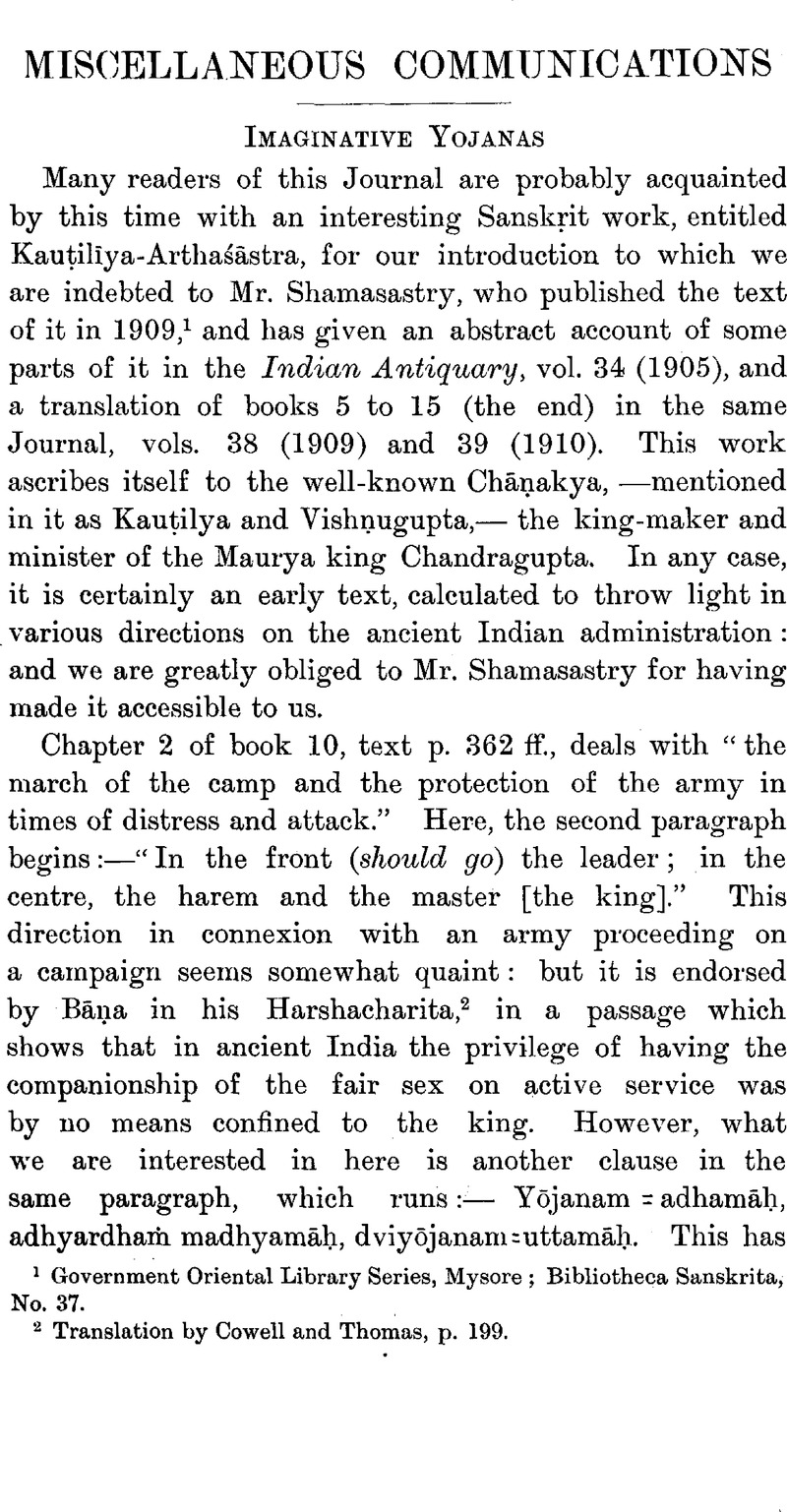Article contents
Abstract

- Type
- Miscellaneous Communications
- Information
- Copyright
- Copyright © The Royal Asiatic Society 1912
References
page 229 note 1 Government Oriental Library Series, Mysore; Bibliotheca Sanskrita, No. 37.
page 229 note 2 Translation by Cowell and Thomas, p. 199.
page 230 note 1 Ind. Ant., 1910. 109.
page 230 note 2 It may be noted that just below this his translation says:—“A bow means five aratnis (5 x 24 = 120 aṅgulas). Archers should be stationed at the distance of five bows (from one line to another). . . .” The text says (p. 370):—Pañchāratni dhanus, tasmin dhanvinaṁ sthāpayēt. This does not define the dhanus: it mentions a special dhanus, to be used in making a battle-array.
page 231 note 1 Compare, for a much earlier time, the Śatapatha-Brāhmaṇa, 10. 2. 1. 2:— Tasy = aish = āvamā mātrā yad = aṅgulayah; “this is his lowest measure, namely the fingers.” In the Bṛihat-Saṁhitā, Kern's reading, mātrā, seems better than the saṁkhyā of the other edition.
page 231 note 2 In some tables the aratni is distinguished from the hasta, and is defined as measuring 21 aṅgula. But the Śulvasūtra of Baudhāyana defines it as equal to 2 prādēśa each of 12 aṅgula, and so agrees in making it equal to 24 aṅgula. In any case, our present point is that the Kauṭilīya-Arthaśāstra gives its value as 24 aṅgula.
page 232 note 1 Bṛihat-Saṁhitā, 68/67. 105; quoted in this Journal, 1911. 208. Compare Āryabhata: see 1907. 655.
page 233 note 1 Essays, 1. 540, note.
page 234 note 1 See remarks by Bunbury, , dismissing such results, in his History of Ancient Geography, 2nd ed. (1883), vol. 1, pp. 210, 620, note 5, and 624Google Scholar.
page 234 note 2 See the Sūrya-Siddhānta, , translation by Burgess, E. and Whitney, , Jour. Amer. Or. Soc., vol. 6 (1860), p. 183Google Scholar. The value 7904 miles has been slightly improved since then: it seems customary now to quote the mean equatorial diameter as 7926 or 7926·6 miles.
page 236 note 1 This Journal, 1906. 1011.
page 238 note 1 Ind. Ant., 6. 238.
page 238 note 2 This is the value of the stadium maintained by Bunbury; see the references mentioned in note 1 on p. 234 above: also by Proctor, , Old and New Astronomy, p. 68Google Scholar.
page 238 note 3 A critic has charged me with forgetting, in my note on the term aḍhakōsikya, the statement of Strabo, i.e. of Megasthenes, about the pillars and the 10 stadia. On the contrary, it is one of the important data which I had before me. My critic himself proceeded to make the twofold mistake of using the double kōs of the Moghal period as a guide towards determining the original kōs for the Maurya period, and of taking 10 stadia = 2022½ yards as the exact value of what he thought to be the half kōs.
page 239 note 1 Trans. Sachau, 1. 166.
page 239 note 2 See this Journal, 1906. 411.
- 1
- Cited by




